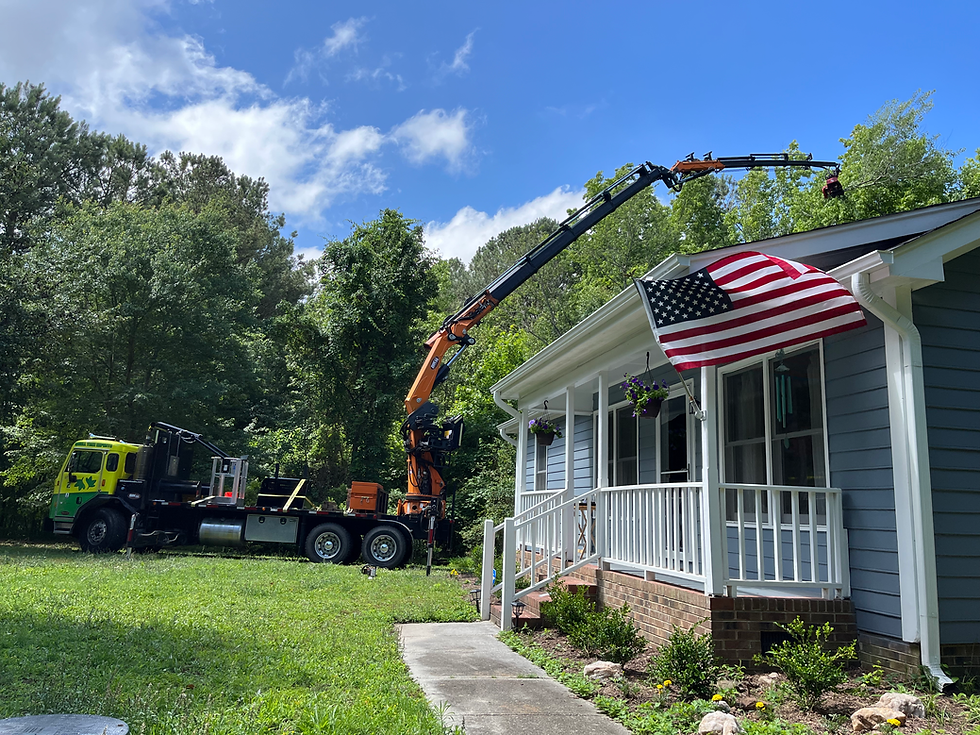Why Topping Hurts Trees
- Timothy Snell
- Jul 7, 2022
- 4 min read
Updated: May 30
Topping is perhaps the most harmful tree pruning practice known. Yet, despite more than 25 years of literature and seminars explaining its harmful effects, topping remains a common practice.
What Is Topping?
Topping is the indiscriminate cutting of tree branches to stubs or to lateral branches that are not large enough to assume the terminal role. Other names include “heading,” “tipping,” “hat-racking,” and “rounding over.”
Topping is often used to reduce the size of a tree. Homeowners may feel a large tree poses a risk to their property; however, topping is not a viable method of height reduction, and may increase risk in the long term.

Topping Stresses Trees
Leaves are the food factories of a tree; however, topping can remove 50-100% of a tree’s leaf-bearing crown. Removing the leaves can potentially starve a tree and trigger various survival mechanisms. Dormant buds are activated, forcing rapid growth of multiple shoots below each cut. The tree needs to grow a new crop of leaves as soon as possible. If a tree does not have the stored energy reserves to do so, it will be seriously weakened and may die.
A stressed tree with large, open pruning wounds is more vulnerable to insect and disease infestations. The tree may lack sufficient energy to chemically defend the wounds against invasion, and some insects are actually attracted to the chemical signals trees release.
Topping Can Lead to Sunburn
Branches within a tree’s crown produce thousands of leaves to absorb sunlight. When the leaves are removed, the remaining branches and trunk are suddenly exposed to high levels of light and heat. The result may be sunburn of the tissues beneath the bark, which can lead to cankers, bark splitting, and death of some branches.
Topping Leads to Decay
Correct pruning cuts are made just beyond the branch collar. The tree is biologically equipped to close such a wound if the tree is healthy enough and the wound is not too large. Cuts made indiscriminately between lateral branches create stubs or wounds that the tree may not be able to close. The exposed wood tissues begin to decay. Normally, a tree will “wall off,” or compartmentalize, the decaying tissues, but few trees can defend the multiple severe wounds caused by topping. The decay organisms are given a free path to move through branches.
Topping Can Lead to Unacceptable Risk
The survival mechanism that causes a tree to produce multiple shoots below each topping cut comes at great expense to the tree. These shoots develop from buds near the surface of the old branches. Unlike normal branches that develop in a socket of overlapping wood tissues, these new shoots are anchored only in the outermost layers of the parent branches and are weakly attached. The new shoots grow quickly, as much as 20 feet (6 m) in one year in some species. Unfortunately, the shoots are weakly attached and prone to breaking, especially during windy or icy conditions. While the original goal was to reduce risk by reducing height, risk of limb failure has now increased.
Topping Makes Trees Ugly
Topping destroys the natural form of a tree. Trees form a variety of shapes and growth habits, all with the same goal of presenting their leaves to the sun. Topping removes the ends of the branches, often leaving ugly stubs. Without leaves (for up to six months of the year in temperate climates), a topped tree appears disfigured and mutilated. A tree that has been topped can never fully regain its natural form.

How to Make a Pruning Cut:
1. Make an undercut about 12–18 inches (30–46 cm) from the limb’s point of attachment.
2. Make a second cut from the top, directly above or a few inches farther out on the limb. Doing so removes the limb, leaving a stub.
3. Remove the stub by cutting back to the branch collar, but do not cut the collar. This technique reduces the possibility of tearing the bark.

Topping Is Expensive
The cost of topping a tree is not limited to only the job cost. Some hidden costs include:
• Increased maintenance costs. If the tree survives, it will likely require corrective pruning within a few years (e.g., crown reduction or storm damage repair). If the tree dies, it will have to be removed.
• Reduced property value. Healthy, well-maintained trees can add 10–20% to the value of a property. Disfigured, topped trees are considered an impending expense.
• Increased liability potential. Topped trees may pose an unacceptable level of risk. Because topping is considered an unacceptable pruning practice, any damage caused by branch failure of a topped tree may lead to a finding of negligence in a court of law.
Alternatives to Topping
Sometimes a tree must be reduced in height or spread, such as for providing utility line clearance. There are recommended techniques for doing so. Small branches should be removed back to their point of origin. If a larger limb must be shortened, it should be pruned back to a lateral branch that is large enough (at least one-third the diameter of the limb being removed) to assume the terminal role. This method of branch reduction helps to preserve the natural form of the tree. Sometimes the best solution is to remove the tree and replace it with a species that is more appropriate.
For more educational information on a variety of tree care topics, visit https://www.treesaregood.org.



